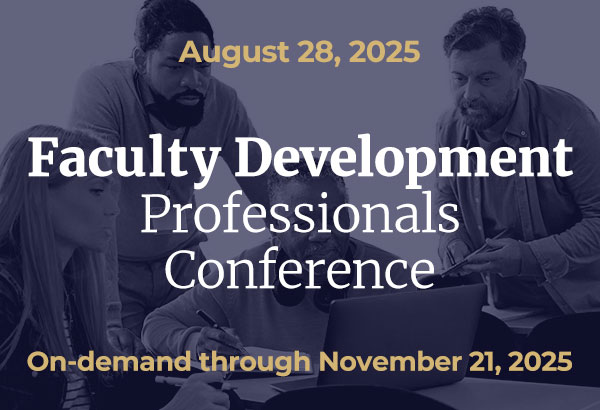Early advocates of online learning focused their efforts on demonstrating online learning’s legitimacy to the broader community. Now, as an increasing body of literature supports the notion that there are no significant differences in learning outcomes between online and face-to-face courses, these advocates have expanded their efforts to address issues of student and faculty support and resource allocation.
Joyce D. Meyer, instructor at Parkland College in Illinois, refers to this as “Stage Two,” in which “online learning is not brand new and has become more mainstream, more accepted.”
Supporting students
In terms of advocating for students, the main focus is on advising, counseling, tutoring, and writing assistance — “things that tend to be high touch.” “It’s not just about conveying information but about having that one-on-one personal contact,” Meyer says. “I think there still are some struggles with this, not an unwillingness to do it, but not knowing how.”
For Meyer, the issue of supporting online students is not necessarily different than that of supporting on-campus students, “although it’s probably more likely that an online instructor will be a student’s lifeline than an on-campus instructor. The student might come to that on-campus instructor first but might just as easily know about the support services available on campus,” Meyer says.
However, there is a risk that by serving as the primary supporter, the line between instructor and counselor can get blurred. Meyer recommends that instructors know their boundaries and redirect students to other support services as needed, preferably via private communication such as e-mail or telephone rather than threaded discussion. “There’s nothing about online learning that says you can’t use the phone,” Meyer says.
[report_ofie=1897]
Being a student’s primary supporter requires online instructors to be more proactive than they might be in a face-to-face course because sometimes students who are struggling will not ask for help. The only indication that a student is having difficulty may be a decrease in his or her participation, which can be monitored with the tracking feature of most course management systems.
Advocating for instructors
Serving as students’ primary advocate can add to an instructor’s workload, turning online courses from “anywhere, anytime” into “everywhere, all the time,” Meyer says. This is why online instructors need to be advocates for themselves as well. Although many online instructors feel that online courses require more of their time than face-to-face courses, there have been few studies on this issue.
New and prospective online instructors often seek Meyer’s and other experienced online instructors’ advice. “They are concerned about the time issue, and I think they should be. It’s realistic to really take a look at what it will mean and to have an estimate of what they’re going to have to do in advance because if they’re not prepared for anytime, anywhere [instruction], it can be really overwhelming,” Meyer says.
Meyer says that higher education institutions need to find ways to quantify the amount of time instructors spend teaching and supporting their students. Measuring online instructors’ responsibilities is important in determining compensation and workload policies.
“Unions do need to look at workload, and that’s probably what’s going to drive additional compensation. But I’m more worried about personal satisfaction and student success. It’s the same motivation for supporting on-campus students,” Meyer says.
To that end, Meyer recommends
- time-study analyses to determine whether and how much more time online courses require of instructors and to compensate accordingly
- new and non-traditional ways to measure similarities and differences between on-campus and online instruction, including the value of the instructor’s role of providing student support
- a transparent long-range plan that includes input from all stakeholders and clarifies roles
- a shift in attitude among instructors from feeling victimized by technology to focusing on what it can do for them and their students.
“I’m all for demystifying online learning. I’m not trying to be in denial about it being more work. Part of demystifying the process is realizing that it’s not as different [from face-to-face instruction] as we assume it is,” Meyer says.
Contact Joyce D. Meyer at jdmeyer@ix.netcom.com.





